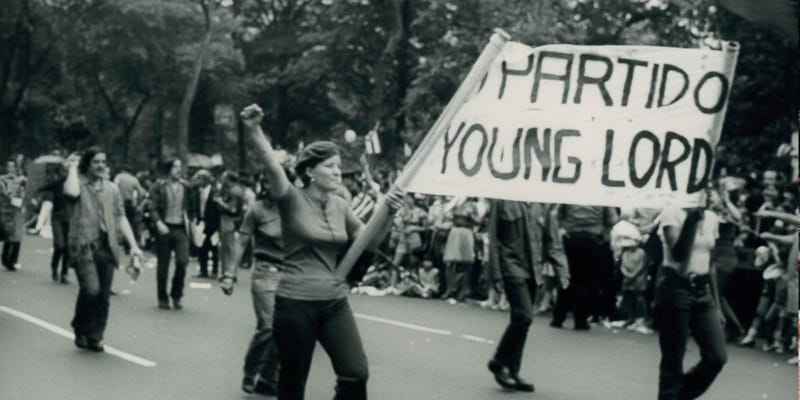Threads of Identity: The Paisley Bandana and the Working Class
In the vibrant tapestry of working-class culture, symbols play a pivotal role in expressing identity, solidarity, and resilience. Among these, the paisley bandana stands out as a multifaceted emblem, weaving together threads of history, rebellion, and unity.
A Pattern Steeped in History
The paisley pattern, characterized by its intricate teardrop-shaped motifs, has a rich and diverse history. Originating in Persia (modern-day Iran) over a thousand years ago, the design made its way to the Indian subcontinent, where it became a staple in textiles. British colonists were captivated by the pattern during the 18th century, particularly through the city of Paisley in Scotland, which became synonymous with the manufacturing of these textiles. The term “paisley” itself is derived from this Scottish town, cementing the pattern’s global footprint.
In the late 19th and early 20th centuries, the paisley pattern was embraced by Western fashion, symbolizing elegance and exoticism. However, its adoption by the working class introduced new layers of meaning, transforming it from a mere decorative motif to a symbol of resistance and solidarity.
The Bandana: A Practical and Symbolic Accessory
The bandana, a versatile piece of cloth, has long been associated with laborers across various industries. Its practical uses—protecting workers from dust, sweat, and sun—made it an essential accessory for miners, railroad workers, and factory laborers. Beyond functionality, the bandana became a symbol of unity and collective identity among the working class.
When paired with the paisley pattern, the bandana transcends its utilitarian origins, embodying a blend of aesthetic appeal and profound symbolism. The intricate design adds a layer of cultural richness, making the paisley bandana not just a tool for protection but a statement of belonging and resilience.
Symbolism in the Working Class
The paisley bandana holds multifaceted symbolism within the working class, reflecting themes of solidarity, rebellion, and identity.
1. Solidarity and Unity:
Wearing a bandana with the paisley pattern can signify membership within a collective group. During labor strikes and protests, bandanas have been used to create a sense of unity among workers, masking individual identities while highlighting collective strength. The paisley design, with its interconnected motifs, mirrors the interconnectedness of workers fighting for common goals.
2. Rebellion and Resistance:
The bandana has historically been a symbol of defiance against oppressive systems. In the 1960s and 70s, it became associated with various countercultural movements, including labor strikes and civil rights protests. The paisley pattern, with its intricate and often bold designs, adds an element of defiance, challenging the monotony and rigidity of industrial labor.
3. Cultural Identity:
For many working-class communities, the paisley bandana represents a fusion of cultural influences. Its origins in Persian and Indian textiles juxtaposed with its adoption in Western labor movements highlight the multicultural threads that comprise the working-class identity. This blend underscores the diversity within the working class and the shared struggles that transcend cultural boundaries.
The Paisley Bandana in Modern Context
In contemporary times, the paisley bandana continues to be a potent symbol within the working class, albeit with evolving meanings and contexts.
1. Fashion and Expression:
The resurgence of vintage and retro styles has seen the paisley bandana reemerge in fashion circles. While primarily a fashion statement, its working-class roots are often overlooked, inadvertently reconnecting the accessory with its historical significance. Young workers and activists alike adopt the bandana not just for style but as a nod to the enduring spirit of labor movements.
2. Subcultures and Movements:
Within various subcultures, the paisley bandana maintains its symbolic weight. Motorcycle clubs, for instance, often incorporate bandanas as part of their attire, symbolizing freedom, rebellion, and camaraderie. Similarly, environmental and social justice movements use the paisley bandana as a marker of activism, solidarity, and resistance against systemic injustices.
3. Digital Symbolism:
In the age of social media, symbols like the paisley bandana find new avenues for expression and dissemination. Online communities advocating for workers’ rights and social justice frequently utilize the bandana in their digital imagery, reinforcing its role as a symbol of collective action and resilience.
Personal Narratives: Voices of the Working Class
To understand the true essence of the paisley bandana, personal stories from within the working class illuminate its significance.
Maria Hernandez, Factory Worker:
“This bandana is more than just a piece of cloth. When I wear it during strikes, I feel connected to all the women who stood before me, fighting for fair wages and safe conditions. The paisley pattern reminds me of the beauty in our struggle and the strength we draw from each other.”
Jake Thompson, Union Organizer:
“The paisley bandana has been a staple in our rallies for decades. It’s a symbol of our unity and our unwavering commitment to protecting workers’ rights. The intricate design represents the diverse backgrounds of our members, all coming together for a common cause.”
Challenges and Controversies
Despite its positive symbolism, the paisley bandana is not without challenges and controversies.
Cultural Appropriation:
As the paisley pattern gains popularity beyond its traditional contexts, concerns about cultural appropriation arise. Ensuring that the use of the paisley bandana respects its historical and cultural origins is crucial. Misappropriation can dilute its significance and alienate the very communities it seeks to represent.
Commercialization:
The commercialization of the paisley bandana poses a threat to its authenticity as a working-class symbol. When mass-produced and marketed without acknowledging its labor movement roots, the bandana risks becoming a mere fashion accessory, stripping away its deeper meanings of solidarity and resistance.
Inclusivity:
Maintaining the inclusivity of the paisley bandana within the working class is essential. As labor movements become more diverse, the symbol must evolve to represent the varied experiences and identities within the working class, ensuring that it remains a unifying emblem rather than an exclusive one.
Preserving the Symbolism
To preserve the paisley bandana’s rich symbolism, intentional efforts must be made to honor its origins and meanings.
Education and Awareness:
Raising awareness about the historical significance of the paisley bandana within labor movements can foster a deeper appreciation and understanding among new generations. Educational initiatives, workshops, and documentaries can highlight its role in fostering solidarity and resistance.
Authentic Representation:
Ensuring that the paisley bandana is represented authentically in both physical and digital spaces reinforces its connection to the working class. Collaborations with labor organizations and advocacy groups can maintain the bandana’s status as a genuine symbol of collective action.
Cultural Sensitivity:
Approaching the use of the paisley pattern with cultural sensitivity ensures respect for its diverse origins. Acknowledging and celebrating the multicultural influences that shape the working class can enrich the bandana’s symbolism and foster greater inclusivity.
Looking Ahead: The Enduring Legacy of the Paisley Bandana
As the working class continues to navigate the complexities of modern labor struggles, the paisley bandana remains a steadfast symbol of resilience and unity. Its enduring legacy is a testament to the power of symbols in shaping collective identity and inspiring action.
Evolving Significance:
The paisley bandana’s ability to adapt to contemporary issues ensures its continued relevance. Whether used in protests for fair wages, movements against environmental injustices, or campaigns for social equity, the bandana serves as a versatile emblem of collective effort and enduring solidarity.
Global Solidarity:
In an increasingly interconnected world, the paisley bandana has the potential to transcend national boundaries, fostering global solidarity among workers. International labor movements can adopt the symbol, creating a shared language of resistance and unity that spans continents.
Cultural Preservation:
Preserving the cultural heritage embedded in the paisley bandana safeguards its authenticity and ensures that future generations understand and honor its significance. By intertwining historical reverence with modern activism, the bandana can continue to inspire and unite the working class.
Conclusion
The paisley bandana, with its intricate patterns and rich history, stands as a powerful symbol within the working class. It embodies themes of solidarity, resilience, and cultural identity, weaving together the threads of past struggles with present-day activism. As a versatile and enduring emblem, the paisley bandana not only protects workers from the elements but also shields their collective spirit, ensuring that the legacy of unity and resistance continues to thrive.
In the ever-evolving narrative of labor movements, symbols like the paisley bandana remind us of the strength found in unity and the beauty that arises from collective action. As workers across the globe continue to fight for their rights and dignity, the paisley bandana remains a vibrant thread in the fabric of their enduring legacy.







